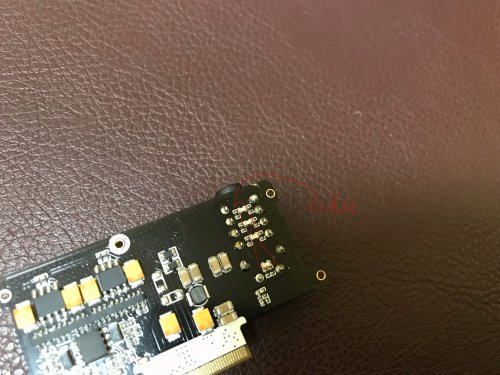EggofSound
100+ Head-Fier
Use a hot air station/gun instead
I am confident that I melt PPS! (I am an experienced person who melted with DAC)

Use a hot air station/gun instead




Does anybody know of a Canadian company or anyone that does this mod.

Awesome!! What can be better than an EX line outIt is AMP7.
I replaced the tantalum capacitor with KEMET (KO-CAP) and made it EX.
(A part of 100uF arrangement (polarity) differs from AMP8)
It is a finish by sticking the sheet for noise suppression of TDK.
I tried to replace the capacitor so that the pattern was peeled off the PCB, but KO-CAP seems to be the best.
(Manufacturers such as TOKIN also provide KEMET)
I'm looking forward to sounding with the DX220.


Awesome!! What can be better than an EX line out






@EggofSound thanks for the pictures. I've been interested in cream solder (paste), because of its ease of use. I haven't tried it though because I'm concerned it doesn't work well for audio. How is the sound quality with cream solder?
Very nice! I love solder paste too! But I often mixed them up for better reliability. What I do is
1/ solder paste for SMD components to helped attach the components, iron it so it solidify
2/ then I use regular SS47 to touch up with it for better reliability
What I found out is that once the SS47 is solidified by iron, the cream grainy textures is no more. It would be very shiny and every solder joins should be
I never tried to observe and tell the differences from when I only use paste alone vs SS47. It took me a lot of money/time/experiments to realized the SS47 is the signature that I wanted, so I always stick with it and never bothered to change up.

